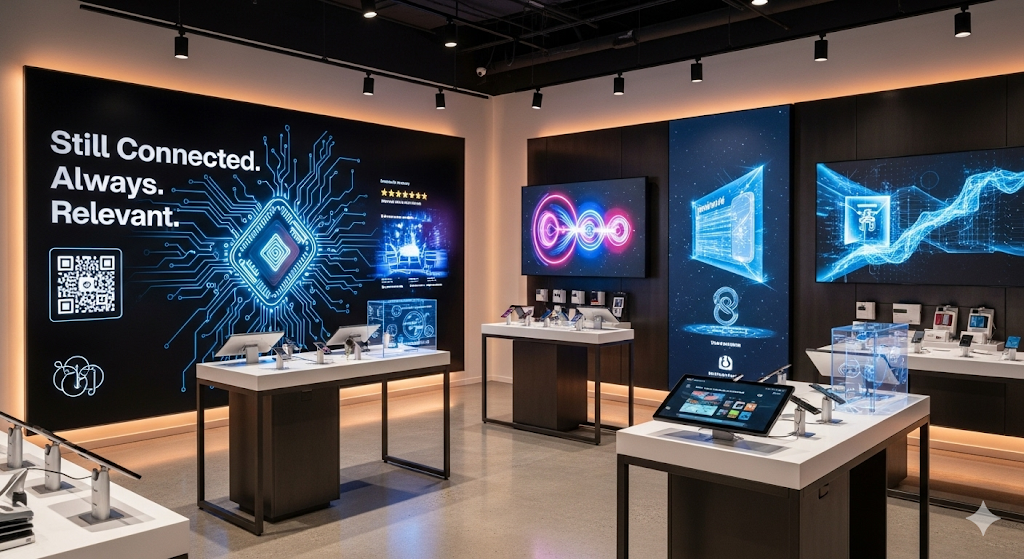Why Retail Display Graphics Still Rule in the Digital Age

Retail Signage Printing has emerged as a cornerstone of in-store marketing strategies, anchoring modern retail environments with physical touchpoints that digital screens alone cannot replicate. By combining high-resolution graphics, durable substrates, and precise color management, print signage bridges the gap between online inspiration and brick-and-mortar decision-making. In an era saturated with social media ads and programmatic banners, a well-executed print display cuts through the noise, harnessing proven principles of visual perception. Savvy retailers leverage these tangible assets to reinforce brand identity, guide shopper flow, and drive impulse purchases at the point-of-sale.
How Have In-Store Marketing Displays Evolved Alongside Digital Technologies?
As screens and sensors proliferated, many predicted the demise of printed point-of-purchase displays. Yet modern stores often blend both worlds, deploying digital signage for dynamic content alongside traditional posters, banners, and shelf talkers. This hybrid approach retains the tactile impact of print while offering instantaneous updates via QR codes or NFC triggers. Today’s in-store marketing displays seamlessly integrate with mobile apps, loyalty programs, and social feeds—ensuring that a promotional poster can spark a hashtag challenge or prompt an SMS sign-up.
Table 1: Static vs. Digital Signage Comparison
| Feature | Static Print Signage | Digital Signage |
| Update Frequency | Manual reprint (days/weeks) | Instant (seconds/minutes) |
| Visual Engagement | Consistent, high-contrast color | Motion, video, real-time data feeds |
| Cost Considerations | Per-unit print and install | Hardware, software, and content license |
| Sustainability Impact | Recyclable materials available | Higher energy consumption, e-waste risk |
| Brand Experience | Tactile, lasting impression | Interactive, dynamic storytelling |
The Psychology Behind Visual Merchandising and Print
Visual merchandising rests on subconscious cues—color, scale, and composition—that guide shoppers’ attention and influence emotions. Print graphics tap into well-documented principles, such as the Von Restorff effect, which suggests that distinctive items stand out and are more easily remembered. Whether highlighting a “Buy One, Get One” deal or framing a luxury handbag, color saturation and font hierarchy direct the eye along a choreographed path. This non-verbal communication can boost dwell time and encourage unplanned purchases, especially when paired with product sampling zones or interactive demos.
What Are the Advantages of Custom Retail Graphics in a Multichannel Campaign?
Custom retail graphics create a unified brand narrative from e-mail newsletters to the physical store floor. While a digital ad might inspire a consumer to visit, bespoke banners and vinyl window clings deliver the final nudge. With precise color matching across print materials, retailers ensure that logos, product imagery, and typography remain consistent—reinforcing trust and recognition. Furthermore, tailor-made displays can accommodate regional promotions, seasonal themes, or localized events, aligning messaging with community interests. Retailers who invest in store signage solutions enjoy higher conversion rates and better social sharing as shoppers photograph eye-catching displays.
Table 2: Common Print Substrates for Retail Graphics
| Substrate | Durability | Visual Impact | Best Use Case |
| Vinyl (PVC) | 1–3 years (outdoor) | High gloss | Window graphics, building wraps |
| Fabric (Polyester) | 5+ years | Matte, wrinkle-free | Hanging banners, trade show backdrops |
| Foam-backed Board | 6–12 months | Rigid, vibrant | Indoor POS signs, shelf displays |
| PVC Foamboard (Gator) | 2–3 years | Smooth matte | Pop-up kiosks, menu boards |
| Adhesive Vinyl | 3–9 months | Transparent options | Floor decals, temporary signage |
Leveraging Store Signage Solutions for Targeted Campaigns
Effective store signage solutions consider shopper psychology, store layout, and campaign objectives simultaneously. End-cap displays, aisle danglers, and checkout counter posters each serve distinct roles—capture attention, guide navigation, and prompt last-minute add-ons, respectively. By rotating themes weekly and synchronizing with digital channels, retailers maintain freshness without overwhelming store teams. Moreover, smart use of QR codes and AR overlays turns static prints into interactive experiences, bridging physical and online realms. Retailers can even track scan-through rates, directly measuring the ROI of each print asset.
How Can Retailers Measure the Impact of Print Signage?
Metrics for retail print effectiveness range from sales lift in tagged SKUs to dwell-time increases captured via in-store sensors. Mystery-shop audits evaluate placement consistency, while shopper surveys capture recall and purchase intent attributed to specific graphics. Advanced analytics platforms overlay foot-traffic heatmaps with signage locations—revealing which wall murals or floor decals drive engagement. When combined with point-of-sale data, retailers identify which promotions delivered the highest incremental revenue, informing future print investments.
Integrating Print Signage with Digital Tools
The most forward-thinking retailers do not pit print against digital; they fuse them. Near-field communication tags embedded in posters trigger product videos on smartphones. Touch-enabled kiosks beside vinyl graphics expand product information without cluttering the design. Even simple technologies—like timed lighting effects or motion-activated audio—elevate printed mountain scenes or fashion lookbooks into immersive brand experiences. By layering interactions, stores reinforce key messages while collecting valuable behavioral data.
Why Traditional Retail Display Graphics Still Dominate the Point-of-Purchase?
At the moment of truth—when customers are poised to buy—tangible signage outperforms ephemeral digital ads. Print stands as a constant visual cue, guiding shoppers through promotional zones, outlet sections, or exclusive launches. Unlike screens that require power and maintenance, graphics can be deployed instantly, remain visible in any lighting, and succeed even if Wi-Fi fails. Retailers recognize this reliability, entrusting core merchandising to printed backdrops and shelf liners that anchor the entire store aesthetic. A local retailer might integrate Printing Services for Boston & Beyond to standardize promotional installs across neighborhood branches, guaranteeing brand alignment.
Case Study: Boutique Chain’s Success with In-Store Displays
A regional fashion boutique faced stagnating impulse sales despite robust online traffic. By redesigning checkout zones with layered posters, counter cards, and floor stickers highlighting complementary accessories, the chain reversed a four‐quarter sales plateau. Monthly promotions—mirrored online and in-store—drove a 23% uplift in add-on purchases and a 15% increase in average transaction value. Critically, the tactile quality of printed tags and shelf talkers fostered a sense of exclusivity missing from prior LCD screens.
What Should Retailers Consider When Selecting a Signage Printing Partner?
Scalability, color consistency, and turnaround times top the checklist when choosing a print vendor. Retailers should verify that their partner offers precise proofing workflows, G7 calibration, and ISO-certified quality controls. Stalwart logistics and nationwide installation networks ensure that seasonal rollouts launch simultaneously across all locations. Equally vital is the breadth of Custom Print Products on offer—fabric banners, rigid panels, eco-friendly substrates—so that each campaign can leverage the most effective medium.
Sustainability and Material Options
Amid growing eco-awareness, sustainable print materials are no longer optional. Recycled PET fabrics, bio-based inks, and fully recyclable paper stocks reduce environmental impact without sacrificing vibrancy. Many print providers now offer carbon-neutral print runs or take-back programs for used graphics. Retailers embracing these options differentiate themselves as community-minded brands while meeting rising consumer expectations for green credentials.
How Do Retailers Balance Print and Digital Investments?
A strategic budget allocates roughly 60% to print and 40% to digital, adjusting based on store foot traffic and campaign seasonality. During high-walk seasons—holiday shopping or back-to-school—print spends often edge upward as shoppers seek in-store inspiration. In contrast, digital budgets expand for flash sales or local events needing rapid, micro-targeted messaging. A blended approach maximizes reach and cost efficiency, ensuring neither channel cannibalizes the other.
The Future of Print in an Omnichannel Era
Print signage will evolve with embedded smart materials, such as e-paper that updates via low-energy signals or LED-backlit posters that shift color temperature in sync with store ambiance. Even now, NFC-enabled posters and personalized print campaigns bring data-driven targeting to physical spaces. Advanced print applications—like heat-sensitive inks or motion-triggered video backdrops—signal that this medium remains ripe for innovation. Ultimately, no matter how digital experiences advance, the visceral appeal of well-crafted retail graphics will hold sway.
FAQs
What is the difference between digital signage and retail signage printing?
Digital signage relies on LED or LCD screens to display video and dynamic content, while retail signage printing produces static graphics on materials like vinyl, fabric, or paperboard. Print offers tactile, always-on visibility without power requirements. Digital excels at real-time updates and animations but can incur higher operational costs. Many retailers leverage both mediums for a well-rounded customer experience.
How often should retail stores update their display graphics?
Brands typically refresh their print displays quarterly to coincide with seasonal themes, product launches, or promotional calendars. High-velocity categories—like fast fashion or beauty—may opt for monthly rotations. Consistency in quality and message is crucial, so retailers balance freshness with budget constraints and installation logistics. Even subtle swaps, such as changing shelf talkers or counter cards, maintain shopper interest.
Can small retailers afford professional retail signage printing services?
Yes, modern print technologies have lowered entry costs, making short-run, variable-data print economically viable. Many regional providers offer bundle rates for in-store collateral kits—window decals, banners, and shelf markers—tailored to independent boutiques. Additionally, on-demand and digital print options reduce minimum order quantities and waste. Small shops that prioritize high-impact graphics often see rapid returns on their print investments.
What role do in-store marketing displays play in customer engagement?
In-store marketing displays capture attention, communicate promotions, and guide shopper behavior along predefined paths. They create moments of discovery—triggering impulse buys or brand storytelling—by showcasing product benefits and pairing ideas. When layered with interactive elements (QR codes, augmented reality), print displays can gather data and extend engagement beyond the storefront. This fusion of sensory appeal and informational depth boosts dwell time and conversion rates.
How do I maintain sustainability in my retail display graphics?
Choose recyclable substrates like PVC-free vinyl or FSC-certified papers, paired with eco-solvent or water-based inks. Collaborate with vendors offering take-back or recycling programs for used signage. Opt for modular display systems that reuse hardware and swap printed panels. Regularly audit print materials to eliminate overproduction and streamline inventory. Transparent communication of green credentials on signage itself can also resonate with eco-conscious shoppers.
Conclusion
In a landscape dominated by pixels, the proven power of print endures—anchoring brand narratives in tactile, visually commanding formats. Whether through vibrant window decals, immersive backdrops, or strategically placed shelf talkers, physical graphics guide and inspire shoppers at every corridor of the store. By integrating digital enhancements with high-quality print, retailers craft truly omnichannel experiences that speak to both the head and the heart. For businesses ready to elevate their in-store impact, contact us at Albert Basse Associates—where expert craftsmanship in retail signage printing turns every square foot into a brand-building opportunity.
